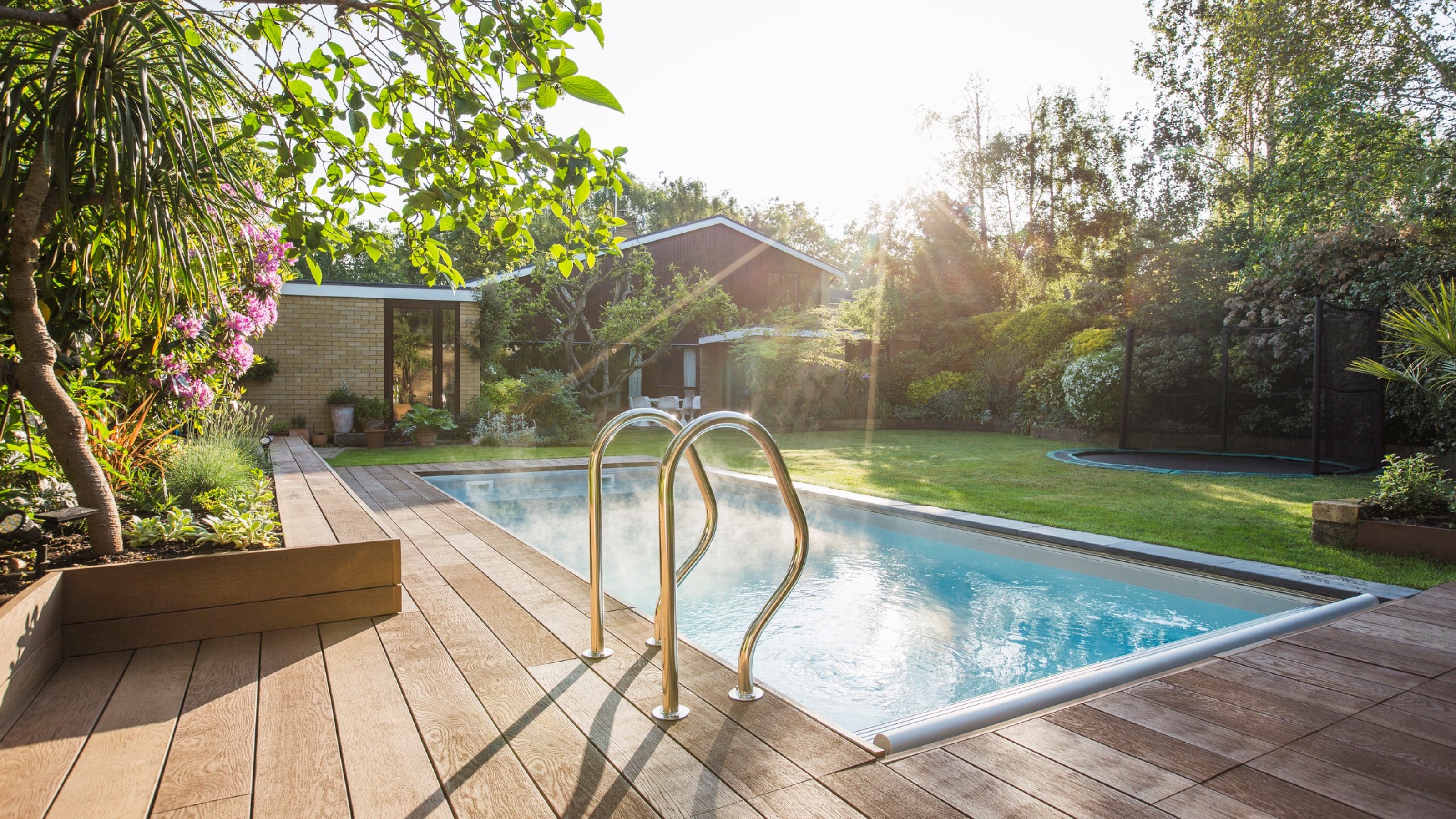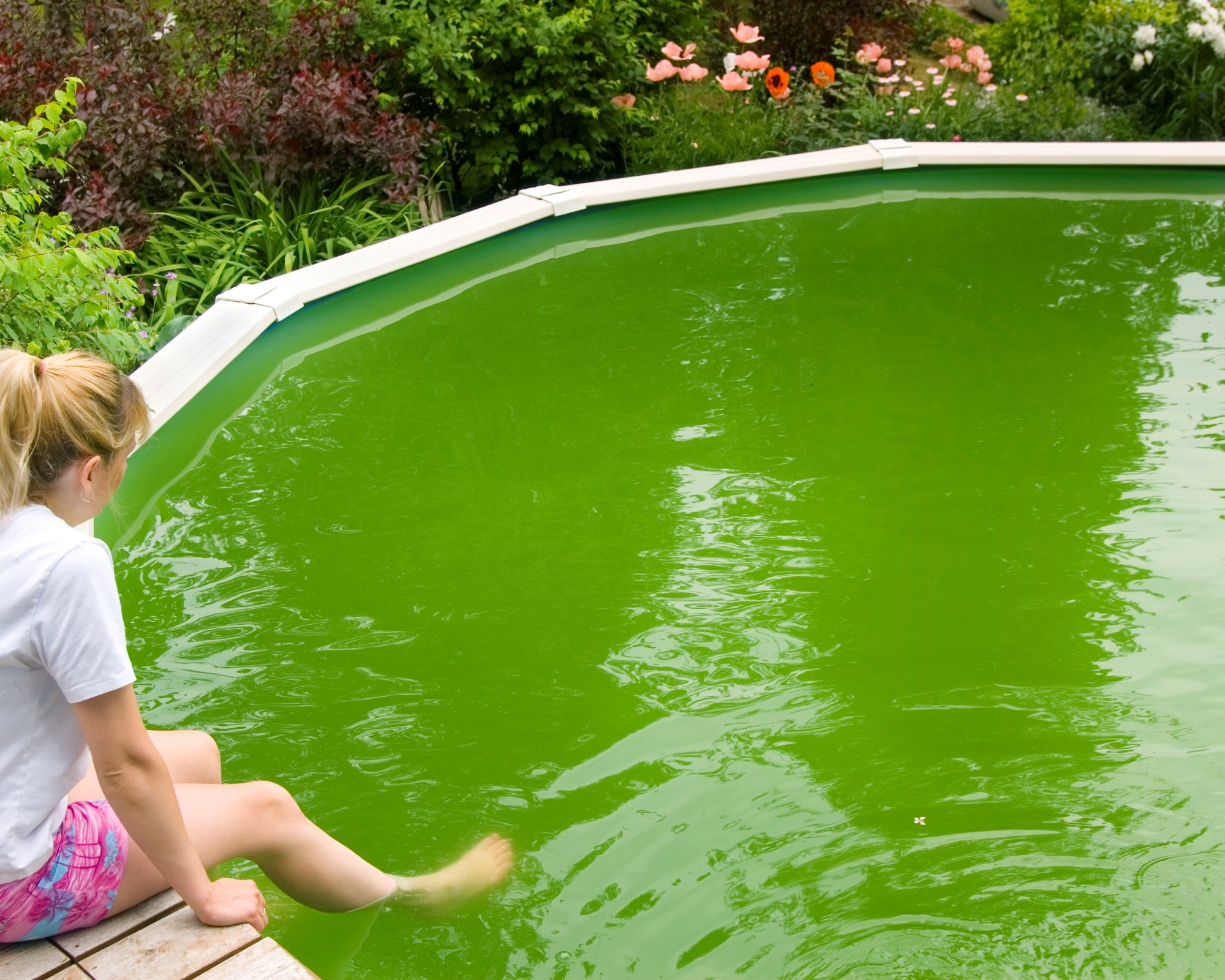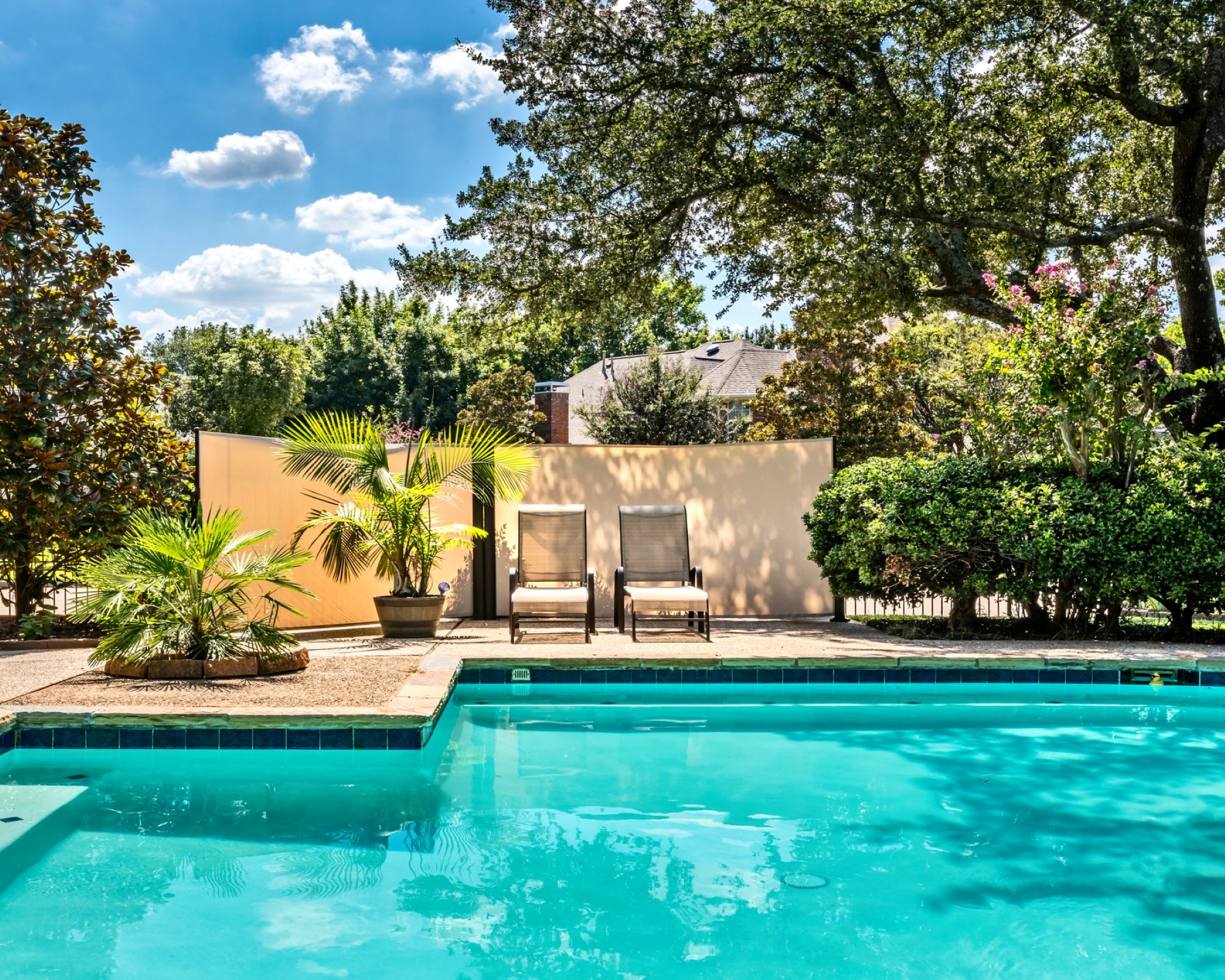How to fix a green pool fast
Properly cleaning and shocking your pool will help restore it to its former blue glory, fast. This is what to do to stop a green pool full of algae, spoiling your summer fun

Need to know how to fix a green pool fast? It can be disheartening to see that your beautiful in or above-ground pool has turned cloudy and murky and alarmingly green, seemingly overnight. Sometimes all it takes is a short vacation; you come back and... Your pool has turned completely green.
Do not panic, though. While a green pool is an annoying problem, it’s easy to clean a pool that has indeed, turned green. It may take a bit longer to restore it to its bright blue glory than with regular maintenance cleaning, but there is a reliable method for cleaning a green pool quickly used by pool professionals. Here's what you need to do:
How to fix a green pool fast
First off, a word on what most pool owners get wrong when trying to fix a green pool. We spoke to Adrian Harrison, director of My Perfect Pool. Adrian has over nine years of experience in the pool industry and knows a thing or two about this common problem.
Harrison says that ‘the biggest mistake pool owners make is applying only one treatment, when in fact, it can be a multiday process. This is why the pool can still be green after shocking.’ So, if you’ve done all the steps below and your pool is still green, you may need to repeat the process twice (or more, in severe cases). It’s true that it will no longer be all that fast, but believe us: you want the green stuff to be gone completely before you swim in that pool again.
1. Clean the pool
Skim the pool, brush the walls and floor to remove algae then vacuum the floor. Clean the filter after. Scrub it like you mean it, and if you have a robot pool vacuum (readily available on Amazon), only run it after you’ve manually removed the algae.
2. Balance the pool water
‘It's essential that the water is balanced first. Attempting to fix a green pool without doing this first is likely to fail’, says Harrison. In particular, the pH and stabilizer (aka CYA or Cyanuric acid) must be balanced correctly. If the pH is too low, chlorine or pool shock will be much less effective.
The correct pH for pool water is 7.4-7.6. 'You can raise the pH with soda ash or baking soda. To reduce it, use muriatic acid or sodium bisulfate.'
Get small space home decor ideas, celeb inspiration, DIY tips and more, straight to your inbox!
The stabilizer should be 30-60 ppm. If it's too high, chlorine or pool shock will not be effective. 'Too low and the sun will burn chlorine off, rendering it useless.'
3. Add shock or chlorine
This is where most pool owners go wrong. Most pools will usually need at least two consecutive shock treatments to fix a green pool.
Wondering if it’s safe to shock a pool that’s gone green twice? Absolutely. ‘Using pool shock correctly is the fastest way to kill algae and clear up a green pool. But it must be done correctly or it could stay green after.’
Here’s where pool owners make another common mistake, according to Harrison: ‘adding the shock during the day. Pool shock is an unstabilized chlorine, usually calcium hypochlorite (cal-hypo for short). To reduce the risk of the sun burning off the shock, add it at night.’
4. Leave for 24 hours
Leave the filter running for 24 hours to remove dead algae. The filter will likely need to be cleaned at least once during this time.
5. Shock again if necessary
Algae will turn grey when dead. If the pool still is still green, add an additional dose of shock. Follow the above steps. Be sure to rebalance the water first. You may need to repeat this yet again.

Why has my pool turned green?
One word: algae. These microorganisms can multiply in stagnant water very quickly, sometimes literally overnight. Quick algae growth typically requires two factors: warm weather and a chemical imbalance in your pool (read: there wasn’t enough chlorine in there).
Not only are algae annoying to clear out from your pool, but they can also cause health issues, from skin infections to gastrointestinal upsets. Never swim in a pool that’s turned green and keep our dog away from it, if you can.
Why has my pool stayed green after a shock treatment?
See step five – many pool owners trying to fix a green pool only shock it once, but this is often ineffective, especially if there was a lot of algae. Be patient: an extra day of cleaning and treatment will ensure your pool is back to normal and is safe to swim in.
You also need to remember to clean the filter as if algae remained in the filtering system, chances are your pool will stay green even after all your efforts fixing it. In severe algae infestations, especially if the pool had been left a long time, you may even have to replace the clogged filter with a new one

How can I prevent my pool from turning green again in the future?
Test your pool water regularly, especially when the weather's warm. Make sure that it has the correct pH and chlorine levels and top up as necessary. Maintaining the correct water balance in your pool will prevent algae growth and will ultimately mean less cleaning for you.
Next, don't skip regular cleaning. If you can't commit to regularly cleaning your pool yourself, invest in a robot pool vac – these do all the work for you and you can leave them on at night.
Anna is a professional writer with many years of experience. She has a passion for contemporary home decor and gardening. She covers a range of topics, from practical advice to interior and garden design.